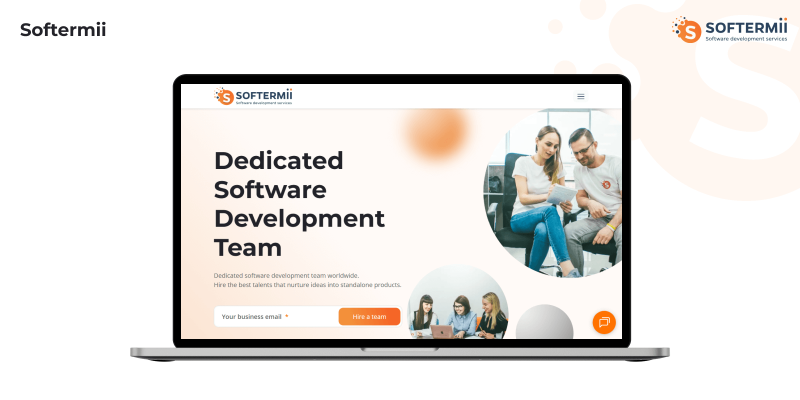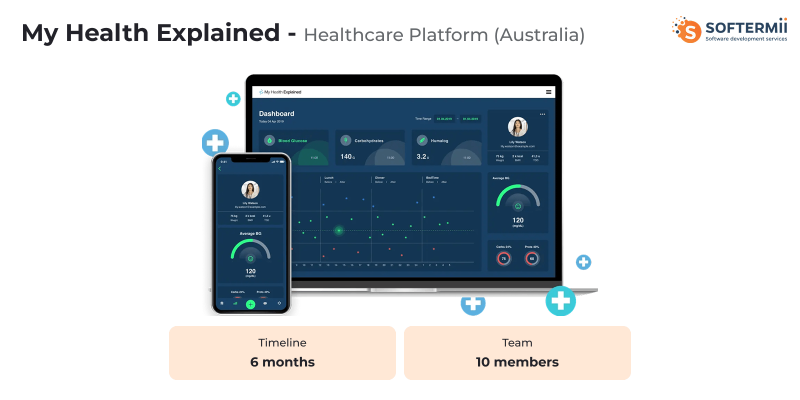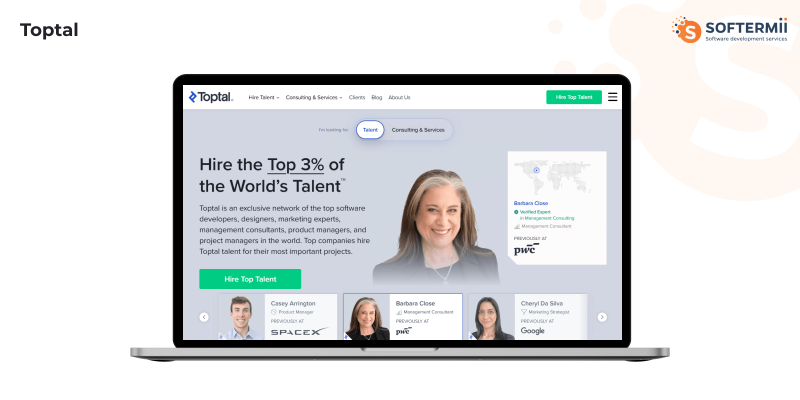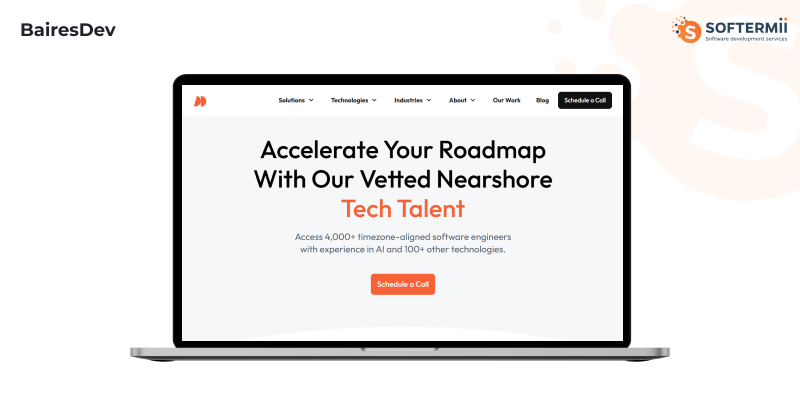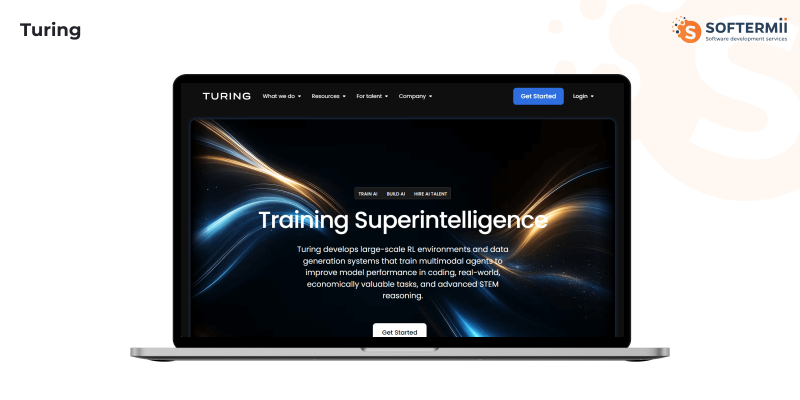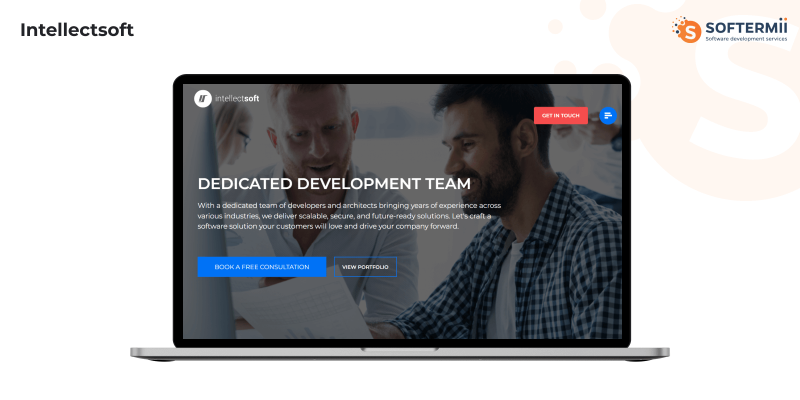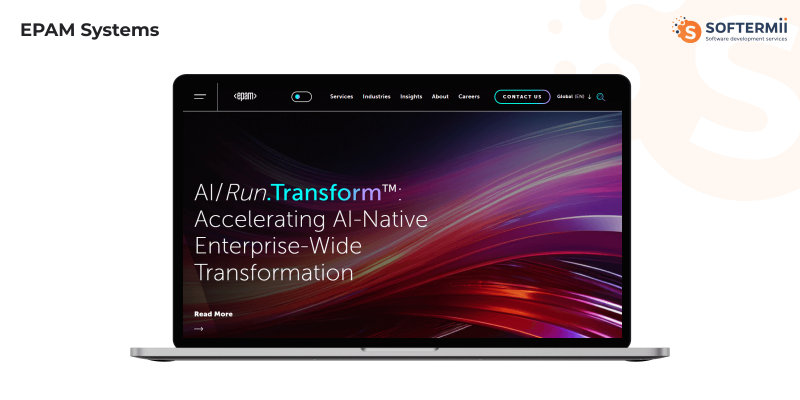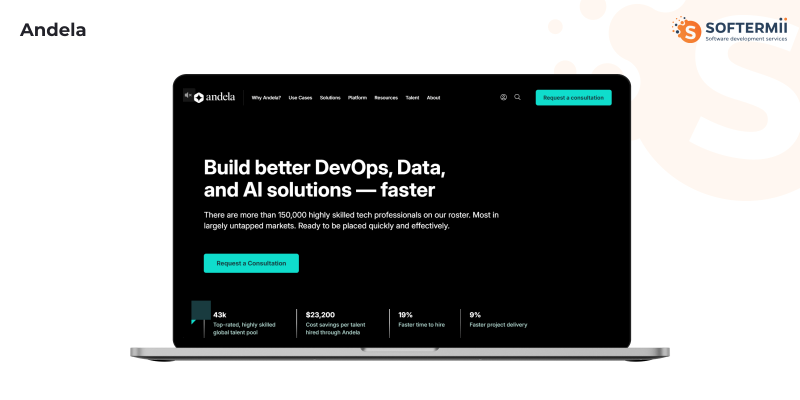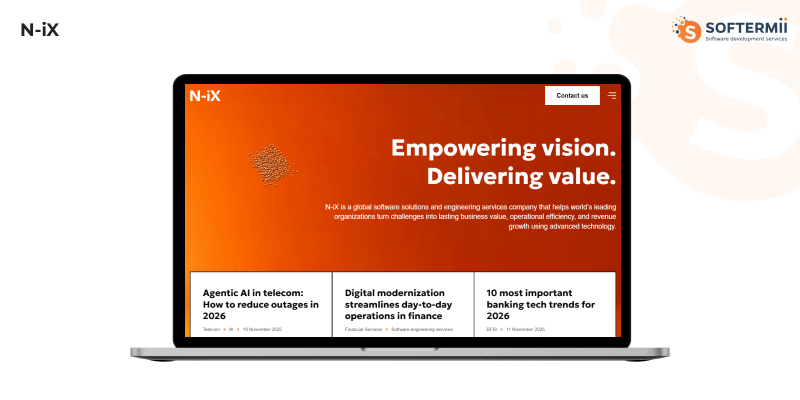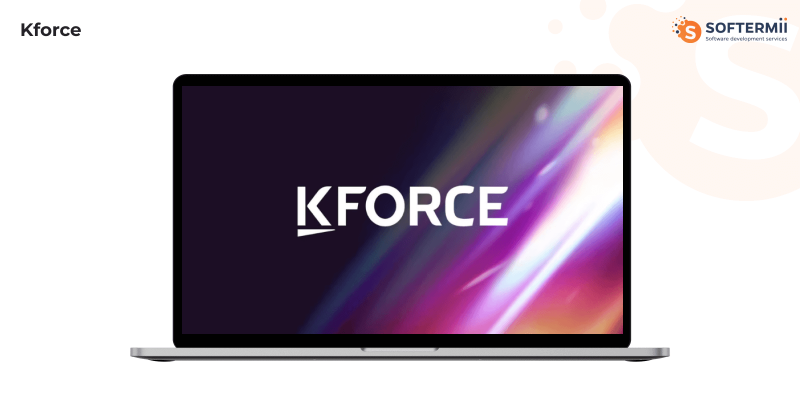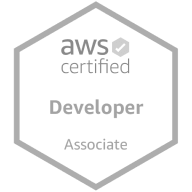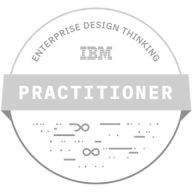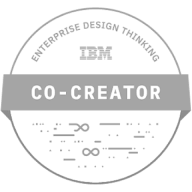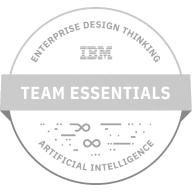
Want to know more? — Subscribe
You need developers, but hiring takes forever. Your project deadline is approaching, and your team is stretched thin. Sound familiar?
This is exactly why top IT staff augmentation companies exist. They connect you with skilled tech professionals who can join your team right away, work on your project, and help you hit those deadlines without the usual hiring headaches.
Think of staff augmentation like calling in reinforcements. You keep control of your project, but you get extra hands on deck exactly when you need them. No long-term commitments, no office space worries, just talented people ready to work.
How to Choose the Best IT Staff Augmentation Company
Here's the thing about choosing a staff augmentation partner: it's not that complicated if you know what matters. So, follow these steps:
Evaluate Their Track Record
- Check whether they've worked with companies similar to yours.
- Look for industry-specific experience that helps them onboard faster.
Read Client Reviews
- Explore feedback on platforms like Clutch, GoodFirms, and LinkedIn.
- Look for recurring themes such as communication quality or problem-solving speed.
Verify Their Technical Expertise
- Make sure they actually have the skills you need.
- Confirm they have experienced specialists (e.g., real React developers, not beginners).
Consider Time Zone Compatibility
- Ensure you have several hours of working overlap.
- Avoid long delays in communication or decision-making.
Trust Your Initial Impressions
- Pay attention to responsiveness and the quality of questions they ask.
- Genuine interest and proactive communication often reflect long-term behavior.
TOP IT Staff Augmentation Companies in 2026
We've researched dozens of providers and narrowed it down to companies that consistently deliver quality results. This list includes both established giants and specialized boutique firms, each with its own strengths.
Some excel at enterprise-scale projects, others specialize in emerging technologies, and others focus on specific regions to better align with time zones. We've included companies across different price points and specializations so you can find one that matches your specific needs.
Here's what we looked at when selecting these companies: verified client reviews, successful project completions, technical expertise, team quality, and communication. These aren't just names we pulled from a Google search – these are providers that have proven they can deliver.
Softermii
Softermii has been helping companies scale their tech teams since 2014. They're not the biggest player out there, but they've built a solid reputation by actually caring about getting the right fit for each project.
What They Do: Softermii is an IT staff augmentation company that provides developers, designers, QA specialists, and project managers who integrate with your existing team. They've completed over 200 projects, which means they've seen pretty much every challenge you might throw at them.
Their Credentials:
- Clutch named them one of the Top 1000 Global Companies in 2024
- 40+ positive reviews on Clutch
- Top Rated Plus on Upwork with a nearly perfect score
- Recognized by GoodFirms as a leading software development company
- 120+ members on board
Services They Offer:
- Custom software developers who know their stuff
- Mobile app teams for iOS and Android
- Full-stack developers and specialists in specific technologies
- QA engineers who actually find bugs before your users do
- DevOps experts and cloud infrastructure people
- UI/UX designers who care about user experience
- Project managers and business analysts
- Dedicated development team options when you need more than just a few people
Who They Work With: Healthcare companies building HIPAA-compliant apps, FinTech startups creating payment platforms, E-commerce businesses scaling for growth, Education tech companies, Real estate platforms, Logistics software, and Entertainment apps.
What Makes Them Different: Softermii only brings in the top 3% of candidates. They don't just check if someone can code – they test problem-solving, communication, and whether they'll actually fit with your team's culture. Their developers stay on projects long-term, so you're not constantly onboarding new people.
Real Examples of Their Work:
My Health Explained - Healthcare Platform (Australia)
A world-renowned diabetes specialist needed a comprehensive web and mobile health app, but didn't have a development team. The challenge? The platform had to integrate with Electronic Health Records, include telemedicine and chat features, work with a chatbot for diabetes support, and comply with strict HIPAA and GDPR standards.
Softermii assembled a team of 1 Delivery Manager, 1 Project Manager, 1 Designer, 1 Business Analyst, 4 Software Developers, 1 QA engineer, and 1 DevOps specialist. They built the platform using Swift, Kotlin, JavaScript, Node.js, and PostgreSQL.
The results speak for themselves: within the first month after launch, the platform gained 11,000 users, achieved a 4.9 out of 5 rating, and facilitated 4,000 online consultations with practitioners. The platform now delivers personalized healthcare plans and tailored educational content for diabetes patients.
Radiant - NFT Marketplace (USA)
A DeFi company wanted to create an NFT marketplace with real-time audio discussion rooms - basically combining digital art with social interaction. The technical challenges were intense: ensuring smooth point cloud rendering on the web, navigating original images within the point cloud, creating a scalable process for 3D model reconstruction, and integrating audio calls during world exploration.
Softermii provided 1 Delivery Manager, 1 Project Manager, 1 Designer, 1 Business Analyst, 2 Software Developers, 1 QA engineer, and 1 Software Architect. They used ReactJS, Strapi CMS, Ethereum, COLMAP, AWS, and Sendbird.
Within just a month of launch, Radiant had 12,000 active users, created 38,000 new NFTs, and users spent an impressive average of 25 minutes per day on the platform. The 3D viewer mode powered by point cloud technology became a hit, letting users immerse themselves in shared experiences and explore virtual worlds.
NeatSend - Shipment Tracking Platform (USA)
SMEs were struggling with traditional logistics solutions that had clunky processes, no real-time support, and limited financial flexibility. The market needed a modern, scalable, and intuitive shipping platform that combined cutting-edge UI with a robust backend and microservices architecture.
Softermii deployed 1 Project Manager, 1 Designer, 1 Business Analyst, 3 Software Developers, 1 QA engineer, and 1 DevOps specialist. They built it using Angular 2+, .NET, MS SQL, and CosmosDB.
NeatSend became a digital freight forwarder designed specifically for SMEs, streamlining shipping processes in minutes. The platform leverages an advanced microservices architecture for scalability and ensures financial flexibility with real-time human support. The user experience is comparable to booking a plane ticket online, and the platform achieved 100% on-time delivery in 2023. Built on a cutting-edge microservices architecture, it guarantees reliability and high performance.
Toptal
Toptal made a name for itself by being super selective. They claim only 3% of applicants make it through their screening, and from what clients say, it shows in the quality.
What They Do: They connect you with freelance developers, designers, and even finance experts from around the world. Most of their talent is senior-level, so you're paying for experience.
Services:
- Software developers across all major languages and frameworks
- UI/UX designers and product designers
- Financial modeling experts and CFOs for hire
- Product managers who can lead your initiatives
- Agile coaches and scrum masters
Who They Work With: Tech startups that need someone right now, enterprise companies working on specific projects, financial services firms, healthcare tech, and e-commerce platforms.
What Makes Them Different: They can match you with someone in 48 hours if you're in a rush. Plus, they offer a trial period, so if it's not working out, you're not stuck.
BairesDev
BairesDev is huge in Latin America and has become one of the top staff augmentation companies for US businesses that want nearshore talent.
What They Do: With over 4,000 engineers, they can staff entire projects or just fill specific gaps. They focus on nearshore augmentation, which means your developers are only a few time zones away.
Services:
- Full-stack development teams
- Mobile developers for iOS and Android
- AI and machine learning specialists (the real kind, not the buzzword kind)
- Cloud migration experts
- Cybersecurity professionals
Who They Work With: They serve everyone from Fortune 500 companies to growing startups. Main industries include tech, healthcare, finance, retail, and manufacturing.
What Makes Them Different: Time zone alignment with the US makes collaboration easier than working with developers halfway around the world. Most of their team speaks English well, and they understand US business culture.
Turing
Turing uses AI to match companies with remote developers. It sounds gimmicky, but they've actually made it work well.
What They Do: They've built a platform that tests developers on actual skills, not just resume keywords. Their AI figures out who's legitimately good and matches them with companies that need those exact skills.
Services:
- Remote software developers
- Full-stack engineers
- DevOps specialists
- Data scientists
- Mobile developers
Who They Work With: Mostly SaaS companies, FinTech startups, e-commerce platforms, health tech, and enterprise software businesses.
What Makes Them Different: Their AI-driven approach delivers faster matching and, supposedly, better fits. Developers are spread across the globe so that you can find talent working at any time zone.
Intellectsoft
Intellectsoft has been around for over 20 years and focuses on newer technologies that many other companies don't touch.
What They Do: They help companies with staff augmentation, especially when projects involve blockchain, IoT, or AR/VR – the stuff that's harder to find talent for.
Services:
- Blockchain developers
- IoT engineers
- AR/VR specialists
- Enterprise software developers
- Cloud architects
Who They Work With: Healthcare companies, logistics firms, construction, finance, hospitality, and energy sectors.
What Makes Them Different: If you're working with emerging tech and can't find the right people locally, Intellectsoft probably has someone who knows what they're doing.
EPAM Systems
EPAM is massive. They're publicly traded and have over 52,000 people. When you need to scale big, they can handle it.
What They Do: EPAM provides top IT staff augmentation services to enterprises that need reliability and scale. They're not the cheapest option, but they're stable and have resources to spare.
Services:
- Enterprise application development
- Data analytics and business intelligence
- Quality assurance and testing teams
- Infrastructure and cloud services
- Digital transformation consultants
Who They Work With: Banks, insurance companies, healthcare systems, retailers, travel companies, and software businesses.
What Makes Them Different: Their size allows them to handle large augmentation needs. Need 50 developers? They've got them. Their processes are mature, which matters for regulated industries.
Andela
Andela trains and connects companies with African developers. They've created opportunities for thousands of developers while solving talent shortages for companies worldwide.
What They Do: They recruit talented people in Africa, train them, and place them with companies globally. Most of their developers are mid- to senior-level.
Services:
- Software engineering teams
- Product designers
- Data engineers
- DevOps professionals
- Technical project managers
Who They Work With: Tech startups, financial services, healthcare, education companies, and media firms.
What Makes Them Different: Competitive pricing without sacrificing quality. Their developers speak excellent English and adapt well to different company cultures.
N-iX
N-iX is a European company with a strong presence in Central and Eastern Europe. They offer a good balance between cost and quality.
What They Do: They provide software engineers for everything from custom development to enterprise systems. Over 2,000 engineers means they can usually find someone who fits.
Services:
- Custom software development teams
- Cloud and DevOps engineers
- Business intelligence specialists
- SAP consultants
- Salesforce developers
Who They Work With: Manufacturing, supply chain companies, finance, telecommunications, and retail.
What Makes Them Different: European work standards with Eastern European pricing. They understand both European and American business practices.
Tech Mahindra
Tech Mahindra brings enterprise-level resources to staff augmentation. They're part of a huge conglomerate, so stability isn't a concern.
What They Do: They offer IT services and staff augmentation with a focus on digital transformation projects.
Services:
- Application development and maintenance
- Infrastructure management specialists
- Cybersecurity experts
- AI and automation engineers
- Network engineers
Who They Work With: Telecommunications, banking, healthcare, manufacturing, retail, and utilities.
What Makes Them Different: Their global delivery model and established processes make them reliable for large-scale, long-term augmentation needs.
Grid Dynamics
Grid Dynamics specializes in retail and e-commerce, which makes them valuable if that's your space.
What They Do: They combine engineering skills with deep retail industry knowledge. They've helped some major retailers scale their platforms.
Services:
- E-commerce platform developers
- Data engineering teams
- Cloud migration specialists
- Microservices architects
- Machine learning engineers
Who They Work With: Retail companies, financial services, technology firms, media companies, and telecommunications.
What Makes Them Different: Real expertise in scaling e-commerce platforms. If you're in retail tech, they speak your language.
Kforce
Kforce has been around for over 50 years and focuses on US-based talent. If you need people on-site or prefer domestic developers, they're worth considering.
What They Do: Flexible staffing across IT, finance, and accounting. They can do temporary, contract-to-hire, or permanent placements.
Services:
- Software developers and engineers
- IT project managers
- Business analysts
- Database administrators
- Systems architects
Who They Work With: Healthcare, financial services, government agencies, technology companies, and manufacturing.
What Makes Them Different: Strong domestic presence in the US. Good option if you need on-site work or prefer working with people in the same country.
Comparison Table
| Company Name | Key Services | Primary Industries | Unique Selling Points | Avg. Client Rating |
|---|---|---|---|---|
| Softermii | Full-stack, Mobile, QA, DevOps, Dedicated teams | Healthcare, FinTech, E-commerce, Education | ISO certified, Top 3% talent, 200+ projects, Cultural fit focus | 4.9/5 |
| Toptal | Software dev, Design, Finance experts | Tech startups, Enterprise, Finance | Top 3% acceptance rate, 48-hour matching | 4.8/5 |
| BairesDev | Full-stack, Mobile, AI/ML, Cloud, Security | Technology, Healthcare, Finance | Nearshore model, 4,000+ engineers | 4.7/5 |
| Turing | Remote developers, Full-stack, DevOps, Data science | SaaS, FinTech, E-commerce | AI-powered matching, Global talent pool | 4.6/5 |
| Intellectsoft | Blockchain, IoT, AR/VR, Enterprise | Healthcare, Logistics, Finance | 20+ years of experience, Emerging tech focus | 4.7/5 |
| EPAM Systems | Enterprise apps, Data analytics, QA, Cloud | Banking, Insurance, Healthcare, Retail | 52,000+ specialists globally, Public company stability | 4.5/5 |
| Andela | Software engineering, Design, Data, DevOps | Startups, Finance, Healthcare | African talent, Competitive pricing | 4.6/5 |
| N-iX | Custom software, Cloud, BI, SAP, Salesforce | Manufacturing, Finance, Telecom | 2,000+ engineers, European quality standards | 4.7/5 |
| Tech Mahindra | App dev, Infrastructure, Security, AI | Telecom, Banking, Healthcare | Enterprise resources, Global delivery | 4.4/5 |
| Grid Dynamics | E-commerce, Data engineering, Cloud, ML | Retail, Finance, Technology | Retail expertise, Digital transformation | 4.6/5 |
| Kforce | Software dev, Project managers, Systems architects | Healthcare, Finance, Government | US-based talent, 50+ years of experience | 4.5/5 |

|
||||
After 10+ years in this industry, I can tell you that the quality of your staff augmentation partner matters far more than the hourly rate. The best augmented teams don't just write code—they challenge assumptions, suggest better approaches, and actually care about the outcome. Sure, you can find someone cheaper, but do you really want to?
 Slava Vaniukov
Slava VaniukovChoosing the Right IT Staff Augmentation Partner
Finding the right partner among top IT staff augmentation companies doesn't have to be complicated. Here's what actually works.
Start by getting clear on what you need. Write down the specific skills required, how long you'll need help, and what your budget looks like. Vague requirements lead to mismatches.
Research 5-7 companies that look promising. Check if they've done work similar to yours. A company that's helped businesses like yours will already understand your challenges.
Look at their portfolios and case studies. Did they deliver on time? Did projects succeed? Can you see actual results, not just pretty screenshots?
Read what clients say about them. Sites like Clutch and GoodFirms have verified reviews. Look for patterns. If five clients mention "terrible communication," believe them.
Talk to their team before committing. Do they ask good questions about your project? Are they responsive? Do they seem genuinely interested, or just eager to close a deal?
Check the contract carefully. Make sure you understand the pricing, what happens if someone doesn't work out, and how you can scale up or down.
Start small if possible. Try them on a smaller project first or begin with just one or two developers. You can always add more people once you're confident it's working.
Conclusion
Choosing from the top staff augmentation companies can speed up your project, fill skill gaps, and save you money compared to traditional hiring. The companies listed here have proven track records and can meet your needs.
The key is finding a provider that aligns with your technical requirements, communicates clearly, and genuinely cares about your success. Don't just go with the cheapest option or the first one you talk to. Take time to evaluate a few, check references, and start with something manageable.
A good staff augmentation partnership feels like extending your own team, not hiring strangers. When you find that, stick with it.
Frequently Asked Questions
How does IT staff augmentation benefit my business?
Staff augmentation solves several real problems. First, it's fast. Need a developer next week? You can have one. Traditional hiring takes months.
Second, it saves money. You're not paying for benefits, office space, equipment, or dealing with payroll taxes. You pay for work done, period.
Third, it's flexible. Need extra help for three months? Great. Project done early? Scale back without awkward layoffs or severance packages.
Fourth, you get access to specialists who might not even exist in your local area. Need someone who knows a specific framework inside and out? Staff augmentation companies have them.
Finally, it lets your core team focus on what matters. They can work on strategic stuff while augmented developers handle specific tasks or fill temporary gaps.
What factors should I consider when choosing one of the best staff augmentation companies?
Focus on what actually matters. Do they have developers with the exact skills you need? Are they actually good at those skills, or are they just listing buzzwords?
Look at their industry experience. Have they worked with companies in your field? Do they understand your challenges? A provider who's done similar projects won't need as much hand-holding.
Check communication quality. Are they responsive? Do they speak your language well enough for daily standups? Time zones matter too – having at least some overlap makes everything easier.
Read what their clients say. Real reviews tell you about quality, reliability, and how they handle problems. Pay attention to negative reviews too – how companies handle complaints says a lot.
Consider the practical stuff: pricing structure, contract terms, how easy it is to replace someone if they're not working out, and what happens when the project ends.
Trust your instincts during initial conversations. If something feels off, it probably is.
Which industries benefit most from IT staff augmentation services?
Any industry with tech needs can benefit, but some see bigger advantages.
Tech startups and SaaS companies rely on top IT staff augmentation services regularly. They need to move fast, scale quickly, and can't always hire full-time for every skill they need.
Healthcare companies building telemedicine platforms or electronic health records need HIPAA-compliant developers with specific security knowledge. That's hard to find locally.
FinTech companies building payment systems or financial platforms need developers who understand complex regulations and security requirements. Staff augmentation gives them access to these specialists.
E-commerce and retail businesses need help scaling for seasonal peaks or launching new features quickly. They can't always justify hiring full-time for temporary workload spikes.
Financial services firms modernizing legacy systems need experts in both old and new technologies. Staff augmentation lets them bring in specialists without long-term commitments.
Education technology companies building learning platforms need mobile developers, backend engineers, and UX designers – often all at once.
Manufacturing and logistics companies implementing IoT or automation often need specialists for only a few months.
What are the risks associated with hiring from the top IT staff augmentation companies?
Let's be honest about potential problems.
- Communication issues happen, especially with remote teams. Language barriers, time zones, or just different communication styles can slow things down.
Solution: Test communication during the vetting process. Have actual conversations with potential team members. Make sure they speak your language well enough for daily standups.
- Quality can be inconsistent. Someone might look great on paper, but underperform on your actual project.
Solution: Start with a trial period. Most good providers offer this. Don't commit to six months right away if you're unsure.
- Integration challenges are real. Sometimes augmented team members don't mesh well with your existing team or company culture.
Solution: Involve your team in the selection process. Do trial days where they work together before making final decisions.
- Knowledge transfer becomes an issue when augmented staff leave. They take all that project knowledge with them.
Solution: Require documentation as you go. Have your internal team shadow augmented developers on critical components.
- Security concerns are valid. You're giving external people access to your code and systems.
Solution: Work with providers who have proper security certifications. Use NDAs, limit access to what's necessary, and verify their security practices.
- Hidden costs sometimes appear. Management overhead, communication tools, and onboarding time – these add up.
Solution: Get detailed pricing upfront—factor in your management time. Make sure contracts spell out what's included.
The good news? Working with reputable top IT staff augmentation agency providers minimizes most of these risks. Check reviews, start small, and scale based on results. If a provider has been around for years with good feedback, they've probably figured out how to avoid the common pitfalls.
How about to rate this article?
0 ratings • Avg 0 / 5
Written by:



